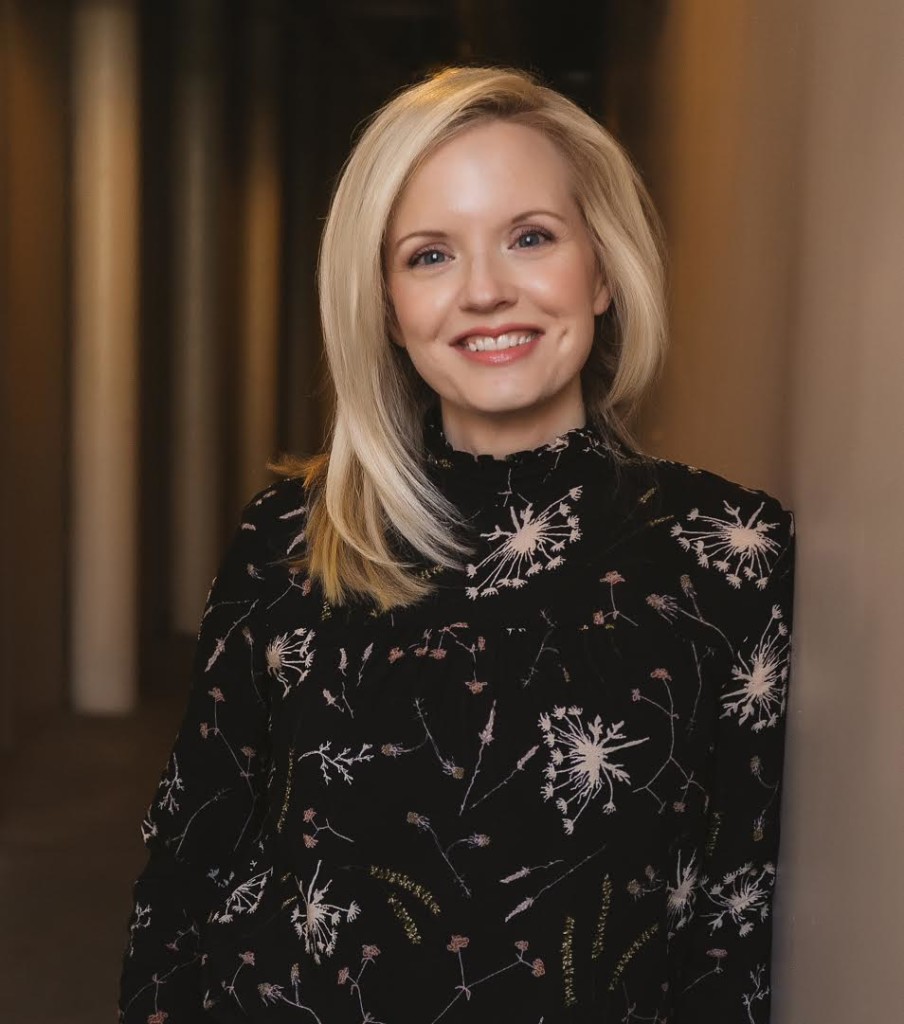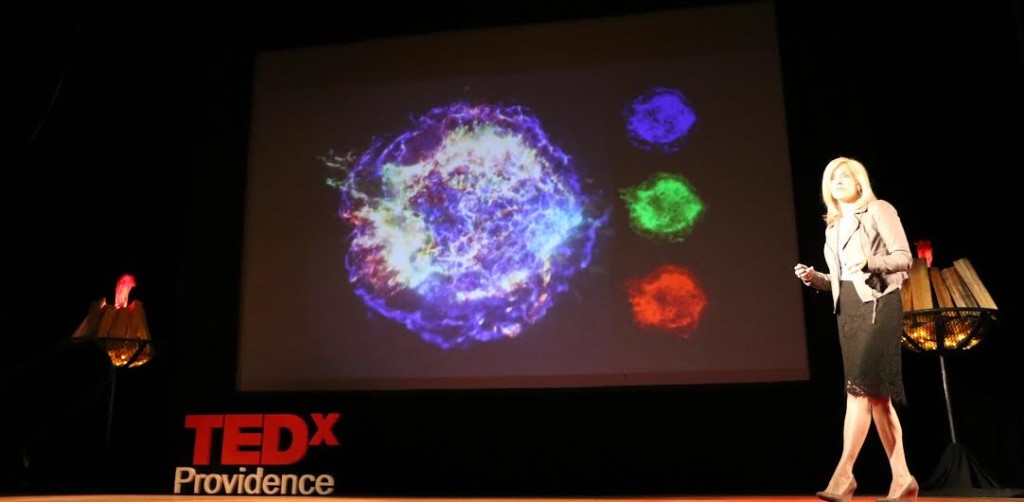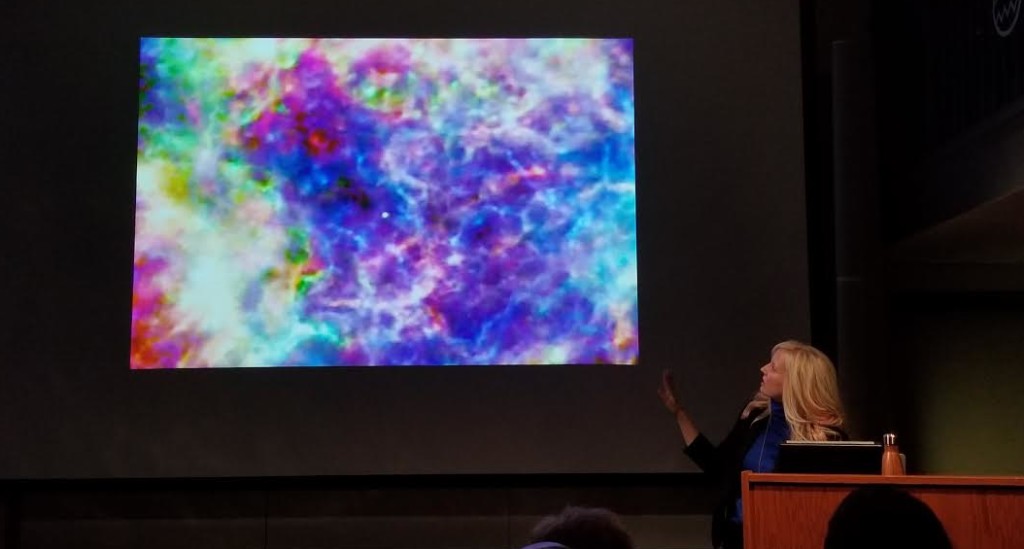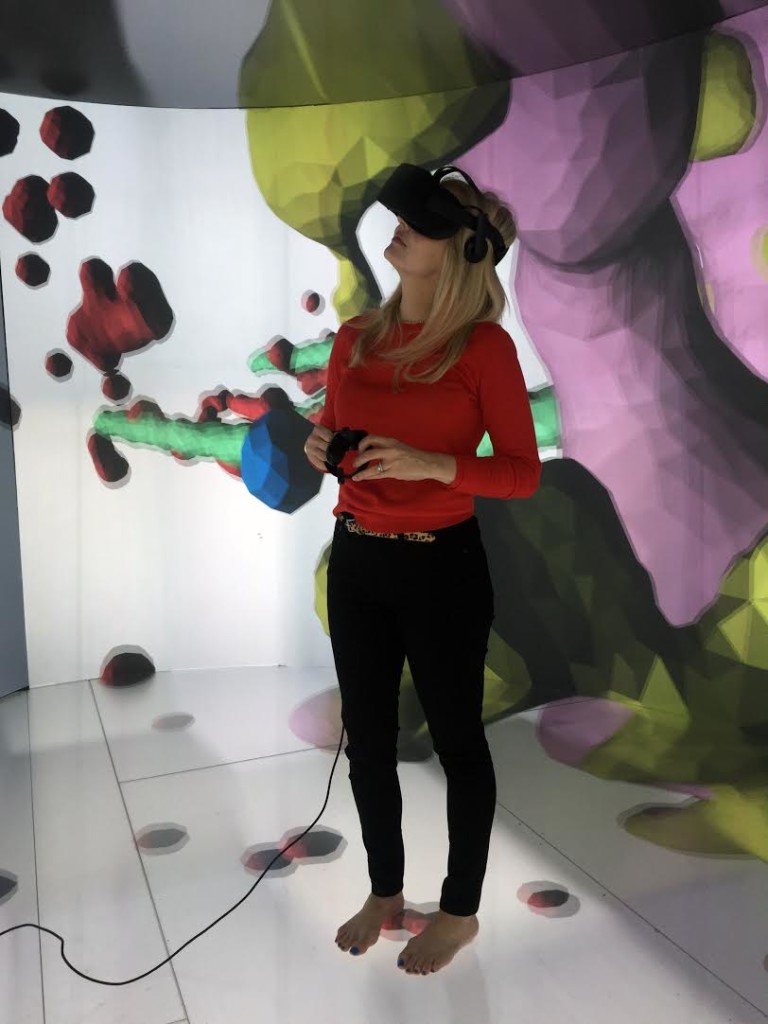
As the Visualization Lead for NASA’s Chandra X-ray Observatory observatory, Kim Kowal Arcand transforms data into stories to communicate about the Universe.
With an impressive background, combining an undergraduate education in molecular biology, and a graduate degree in computer science from Harvard University, Kim talks to Rocket Women about the wonders of NASA’s Chandra Observatory and her crucial role, currently using virtual reality (VR) and augmented reality (AR), to communicate its findings to the public.
Tell me about your journey to the space industry and to where you are now?
I’ve had the pleasure of working for NASA’s Chandra X-ray Observatory since 1998, about a year before the spacecraft was launched from Space Shuttle Columbia. The Chandra X-ray Observatory is an X-ray telescope that studies very hot regions of the Universe such as exploded stars, clusters of galaxies, and black holes. Operated for NASA by the Smithsonian Astrophysical Observatory, Chandra orbits about one third of the way to the moon at its farthest point from Earth. Scientific and control operations for the observatory are headquartered in Cambridge, MA, where I work.
Operated for NASA by the Smithsonian Astrophysical Observatory, Chandra orbits about one third of the way to the moon at its farthest point from Earth. Scientific and control operations for the observatory are headquartered in Cambridge, MA, where I work.
But I didn’t go to school thinking I would work in the space industry. Like many kids, I suppose, I had wanted to be an astronaut when I was young (quickly realizing I could in no way handle the bumpy launches!). I really enjoyed science however, in all forms. I completed my undergraduate work in molecular biology and then went on to do graduate work in computer science. That background combining biology, physics, chemistry, computer programming, etc., was incredibly helpful in my job working for Chandra.
I use data to tell stories and communicate about the Universe in many different ways. So I transitioned from working with data from a microscope to working with data from a telescope.
As the Visualization Lead for that observatory, I use data to tell stories and communicate about the Universe in many different ways. So I transitioned from working with data from a microscope to working with data from a telescope.
What are your favourite things about your job?
There are a lot of things to love. In this line of work, I get to learn something new each and every day. Right now, I’m learning all about virtual reality (VR) and augmented reality (AR), as I’ve worked with some collaborators to create our first VR/AR data-driven experience for Chandra of a supernova remnant in our Milky Way. Getting to walk inside a star that exploded 10,000 light years away, based on data that we’ve been collecting for a good number of years from Chandra and additional observatories? Just incredible.
Getting to walk inside a star that exploded 10,000 light years away, based on data that we’ve been collecting for a good number of years from Chandra and additional observatories? Just incredible.
Our work is typically very collaborative. Being able to work with and learn from incredibly bright, interesting people from all across the world is another definite perk.
I’ve learned so much in this job, beyond the scientific/technical aspects, from how to write better, to how to speak better, to how to work through highly complex situations. Those softer skills have really helped me grow into areas I would not have expected – writing popular science books (my fourth one just came out this month), giving a number of public talks around the world, working with scientific diplomacy groups, etc.

When you’re having a stressful or bad day, what helps you get through it?
Beyond smaller practical techniques such as keeping an organized digital calendar and a lot of sticky notes, I would say two things help me. One is that my job is flexible, and the other is that it can be creative. So if I’m feeling particularly stressed about a project or situation, I know that I can usually step aside for a bit, and get a little space or perspective. I might use that time to switch to a project that’s more creative leaning until I can figure out the way to approach the other more difficult situation.
Sometimes, when I’m really deep in a stressful project or situation, I try to remind myself that I’m not saving lives in the ER or on an operating table. I love my job, but keeping a reality check is healthy for me.
Also, I have a very, very supportive family. I couldn’t do much without them! The whole “it takes a village” thing is definitely something I believe and am fortunate to have.

Who were your role models when you were growing up? How important are role models to young women?
I didn’t know many women in science or technology when I was young. I was a little bit isolated I think. But I always looked up to my mom. She was a waitress when I was very young but she wanted to be a nurse. I remember sitting with her at our dining table when she was studying anatomy for one of her classes at a local community college. I was really interested in that anatomy book! But I was also so inspired that she could be more than one thing- a mother, a waitress, a student – all at once. She even took me to school with her a few times, and I can remember looking through the bookstore at science texts. She became a nurse’s aide a few years later and enjoyed her job until she retired recently.
I didn’t know it was ok to fail sometimes. I didn’t know where to look for internships and events and organizations and jobs. I tried to read up on my fields and take an educated guess, but I was just stumbling through hoping I would make the right decisions.
It is important to have role models. In high school and college, most of my science and computer science teachers were men. As a first generation college graduate I didn’t have a network in either of these fields. I didn’t know it was ok to fail sometimes. I didn’t know where to look for internships and events and organizations and jobs. I tried to read up on my fields and take an educated guess, but I was just stumbling through hoping I would make the right decisions.
I was very fortunate to land in a job where there was a supportive network growing for women in STEM, from the scientists and administrators to the very astronauts who launched the telescope. I’ve had that personal support for much of my career in a male-dominated field, and I truly appreciate it. I also try to pay it back as much as I can for young women and minoritized groups exploring the field.

What has been the most rewarding moment in your career so far?
One technical achievement was working on the first 3D printed data-driven model ever created of a supernova remnant, the leftover bits of an exploded star (as mentioned above). 3D models of distant objects in space are difficult to create due to the limitations of the data- they require not only a very large amount of data on the specific object, but also the type of data must provide velocity maps to gauge the depth since we cannot fly to and around such objects ourselves.
The successful data-driven model of the supernova remnant Cassiopeia A was the first of its kind and we translated that into a format that can be manipulated in-browser by the user, be printed in 3D, and just recently, be experienced in VR. Such technological applications for astronomical sources have wide applicability for accessibility for users of different needs, for educational purposes for non-experts, as well as new avenues for exploration of data by experts.
One major non-technical moment, however, would be the work we did for the International Year of Astronomy in 2009 and the follow-up work for the International Year of Light in 2015. These were large-scale public communications efforts to reach out into communities across the world with high-quality science content placed in free or otherwise accessible areas such as malls, metros, airports, cafes, libraries, town squares and even hospitals and a prison.
We worked with grassroots community organizers to translate content into many languages, incorporate local information, culture and perspectives, and ended up reaching many tens of millions of people worldwide. Working with UNESCO, the International Astronomical Union, the international society for optics and photonics, the U.S. Department of State and a number of other groups on these “International Years,” celebrating a common topic, we were able to communicate with so many new people.
If you had one piece of advice for your 10-year-old self, what would it be? Would there be any decisions that you’d have made differently?
I’m sure I should have some advice for my 10-year-old self, but I’m too much of the mindset that it’s good to learn from your mistakes and it’s okay to fail and learn from that failure. I prefer to look forwards instead of backwards – perhaps that’s somewhat ironic considering how much of astronomy involves looking back in time.
I wanted to save the world when I was young and although I certainly can’t claim that privilege, I have a life of meaning and a career I find worthy of one of the most precious of commodities – time.
Instead, I do tend to think on what my 12-year-old daughter might experience in her possible future career. She currently wants to go into a STEM field, and it’s rather depressing to me that so little seems to have changed since I have been a part of those fields. For her, and all the other children considering how to make an impactful stamp on the world, I would say dream big, think big, look forward, and –when you can – help others do the same. I wanted to save the world when I was young and although I certainly can’t claim that privilege, I have a life of meaning and a career I find worthy of one of the most precious of commodities – time.
